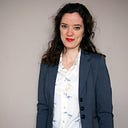Forget SMART, it’s okay to be goal-seeking
What is your goal? This seems to be a common question, with a very common response — not knowing and looking it up on the internet. When typing “what is your goal”, the search engine Ecosia suggests “what is your goal interview questions” and “what is your goal in life best answer”. And my nerdy PhD brain thinks: interesting, maybe life, entrepreneurship, and design have some things in common! Let me tell you why.

Starting from goals or from means
A debate that entrepreneurship scholars get caught up in from time to time is whether entrepreneurs start ventures with a specific goal in mind, or whether entrepreneurs start ventures based on their knowledge, preferences, and network. In other words, whether entrepreneurial processes are goal-driven or means-driven.[i] To be fair, both can be true. You might know exactly that you want to open a barber shop that is also a cat café in Bushwick, or you might know that you’re a trained barber, like cats, have friends in New York City, and go from there.
However, my impression is that we talk about the goal-driven path much more than the means-driven one. In business school, we learn that setting goals is the cornerstone of strategy and that goals have to be specific, measurable, assignable, realistic, and time-related (SMART).[ii] The means-driven path? Not a part of core courses, so it must be somewhat clumsy and maybe even unprofessional. Let me change your mind!
Seeking what could be a goal
One of the brightest minds of the 20th century, Herbert Simon, stated that our brains are “goal-seeking, information-processing systems”.[iii] We might picture goal-seeking as you knowing your general direction, but continuously seeking and hence formulating and re-formulating your specific goal. If we think about the entrepreneurial process as means-driven, we can understand goal-seeking as an active process of figuring out your specific direction while forging your path.
Let’s imagine creating a communal sculpture in a nearby park — without specifying beforehand what exactly you will build. You bring wood, your neighbors bring paint, and someone brings fairy lights. The idea of goal-seeking helps us understand that what the sculpture will turn out to be is continuously imagined and re-imagined throughout the process of making it. By chance and through self-organization, certain people and ideas might meet at one side of the sculpture and start building a whole new structure with what they found there. At the same time, you might paint by yourself for a little while in order to figure out your desires, intentions, and sensations, before playing with others.
Goal-seeking sciences
The book in which Simon mentions goal-seeking systems is concerned with “sciences of the artificial” or design science. Unlike natural science, design science studies things that humans design. It concerns itself “not with how things are but with how they might be”. Examples range from engineering to medicine to architecture — and of course business.[iv]
Design science can conduct very goal-oriented and deliberate design work such as building a bridge, which might be more prominent in engineering. However, it can also engage in research that is more goal-seeking and spontaneous design work such as a new venture, which might be more prominent in entrepreneurship.
The best answer to “What is your goal in life?”
After this wild ride through entrepreneurship, strategy, and the philosophy of science, here’s my attempt at the best answer to “What is your goal in life?”.
It is either: “My goal in life is to open a barber shop cat café in Bushwick by the end of the year.”
Or: “I am not quite sure what my goal in life is, but I know that I am good at X, value Y, and know people like Z that I want to keep co-creating with.”
Choose wisely 😉
[i] Sankaran Venkataraman, Nicholas Dew, and Saras D Sarasvathy, Shaping Entrepreneurship Research: Made, as Well as Found, 2020.
[ii] G. T. Doran, “There’s a S.M.A.R.T. Way to Write Management’s Goals and Objectives,” Management Review 70, no. 11 (1981): 35–36.
[iii] Herbert Simon, The Sciences of the Artifical, 2nd ed. (Cambridge, Mass.: The MIT Press, 1996), 27.
[iv] Simon, The Sciences of the Artifical.
